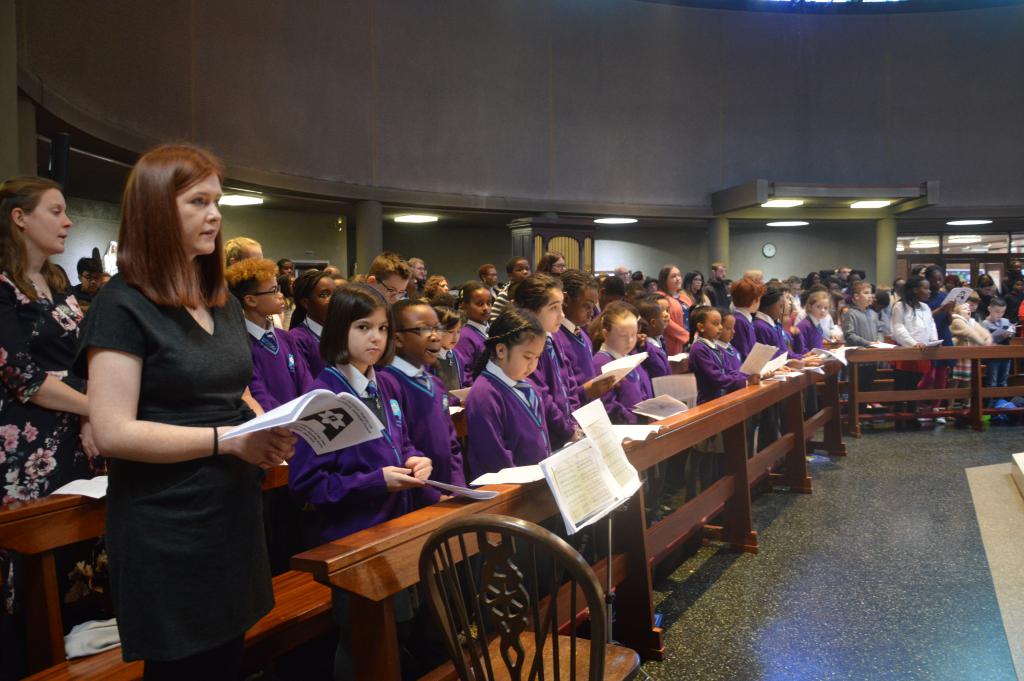by Fr Jeremy Trood
Parish Priest, St Aloysius Somers Town
On Sunday 11th March Cardinal Vincent Nichols celebrated Mass at St Aloysius, Somers Town in thanksgiving for the fiftieth anniversary of the current Church. The church was packed with parishioners, some of whom remembered the day the church opened. The children of St Aloysius Primary School sang at communion, as they had done fifty years earlier at the opening Mass. A reception was held in the parish centre afterwards and the Cardinal cut a cake in celebration, not only of the 50th anniversary of the church but also the 450th birthday of St Aloysius Gonzaga.
It was on 9th March 1968, the four-hundredth anniversary of the birth of St Aloysius Gonzaga, that Bishop Casey dedicated the Altar and celebrated the first Mass in the newly built church of St Aloysius in Somers Town. It was not the first church dedicated to St Aloysius in Somers Town, the first church had been opened in 1808 and had served the needs of the parish faithfully. However, the church had been damaged during the war and it was felt that the needs of Catholics in Somers Town would be better served by a new church rather than repairing the old one.
Fr Arthur Welland, parish priest, 1945-1977 saw it as his mission to revitalise the parish and to build a new church. After several false starts, permission was finally granted, and on 15th January 1967 Cardinal Heenan laid the foundation stone. The Church took another year to build until all was ready for the 400th birthday of St Aloysius.
The architect was John Newton of Burles, Newton and Partners who had been appointed to design a modern church with a concern for liturgy. Including the hall and presbytery, the building’s cost was £150,000. An innovation of the design was to place the tabernacle on one side of the sanctuary in a specially decorated shrine. Cardinal Heenan said of the design, 'The Blessed Sacrament Chapel is a triumph of design and art. I hope that architects of future churches will come to St Aloysius to learn how the altar can be central without diminishing the prestige of the Blessed Sacrament Chapel'.




